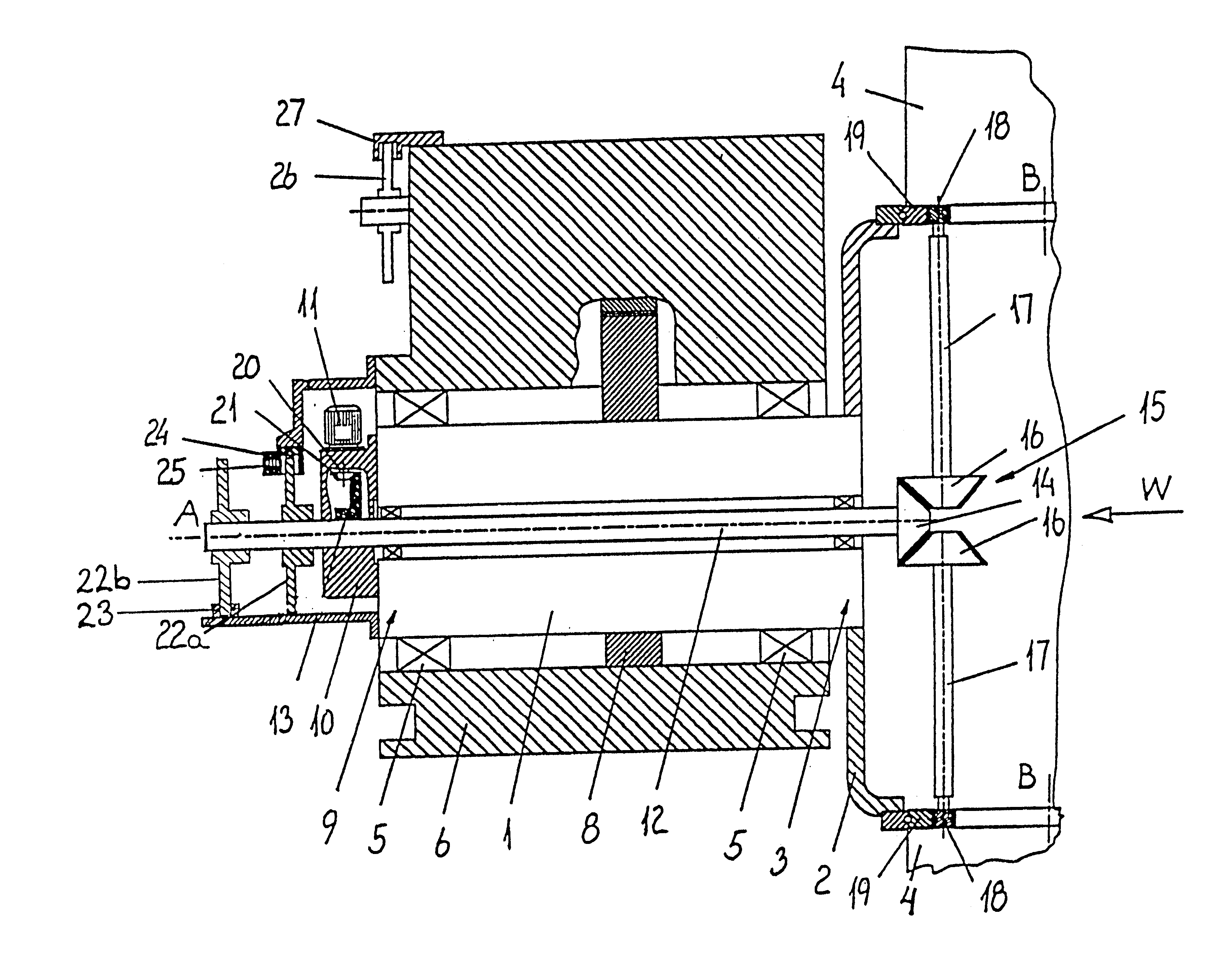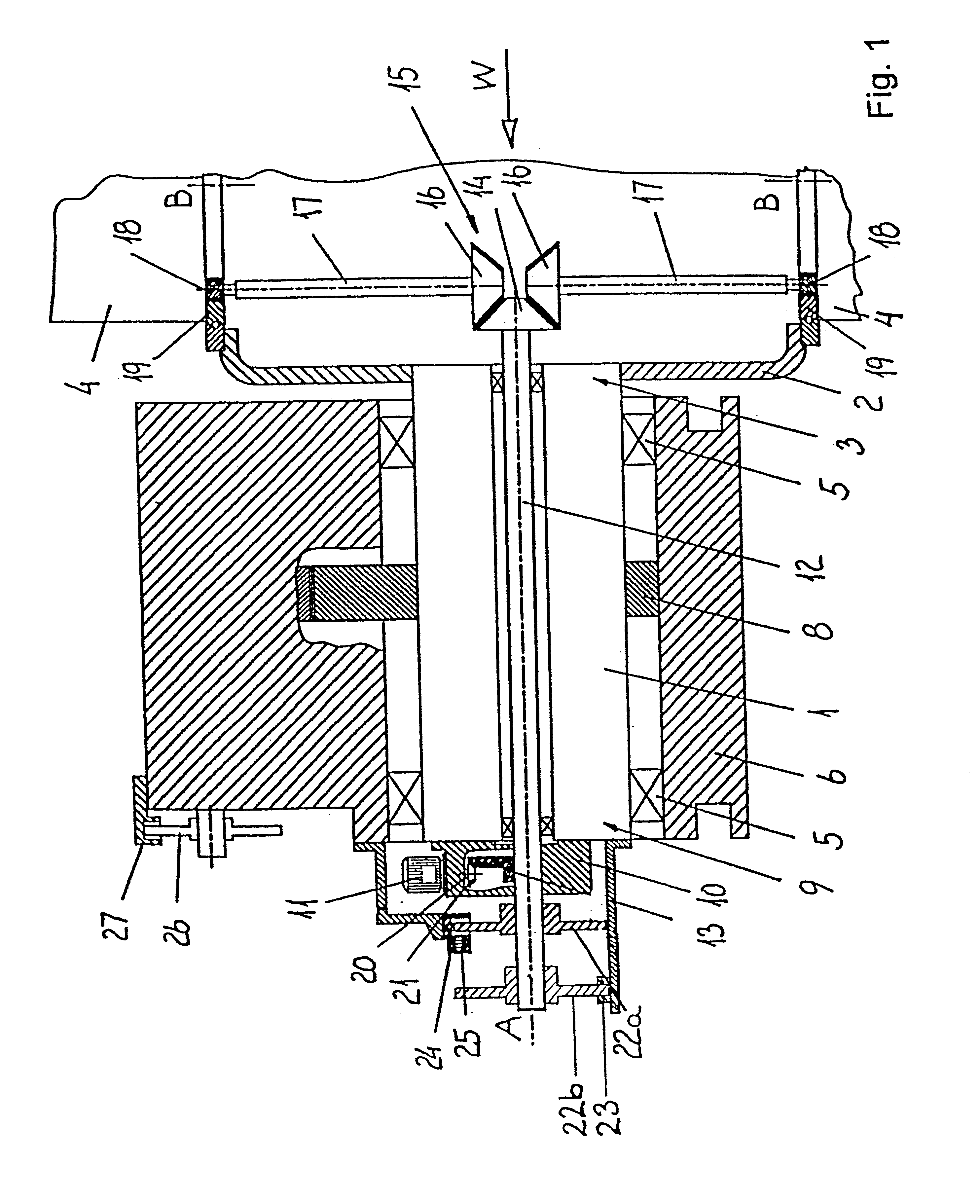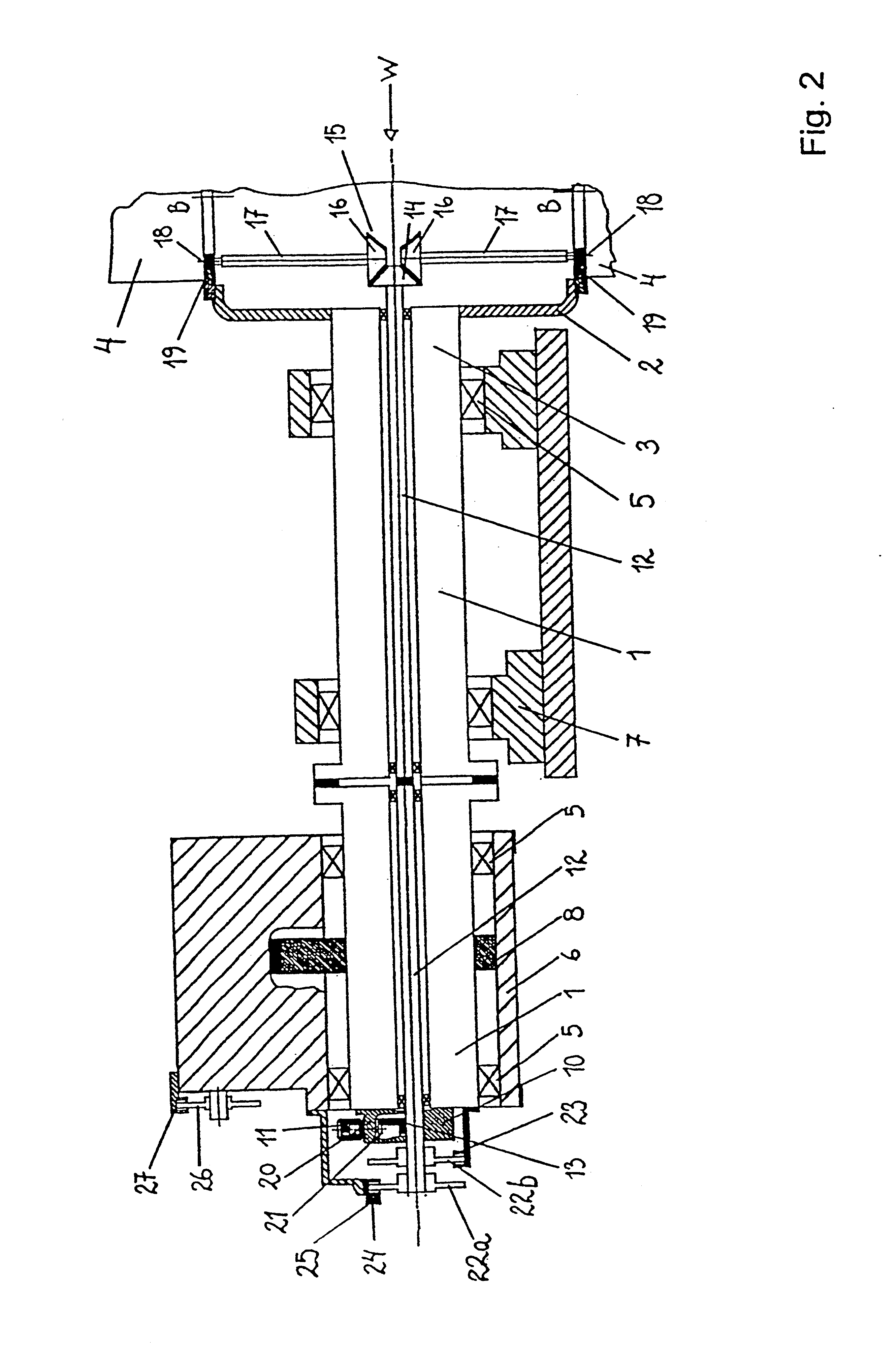Method and a device for adjusting the pitch and stopping the rotation of the blades of a wind turbine
a technology of wind turbine blades and devices, which is applied in the direction of propellers, propulsive elements, water-acting propulsive elements, etc., can solve the problems of large disadvantage, large wear of motors, and continuous operation of motors, so as to reduce the overall efficiency of wind turbines and high energy consumption.
- Summary
- Abstract
- Description
- Claims
- Application Information
AI Technical Summary
Benefits of technology
Problems solved by technology
Method used
Image
Examples
Embodiment Construction
FIG. 1 and FIG. 2 illustrate a part of a drive mechanism of a wind turbine, FIG. 1 showing a first preferred embodiment where the main shaft of the blades is integrated in the main shaft of transmission, and FIG. 2 showing a second preferred embodiment where the main shaft of the blades is separate relative to the main shaft of transmission. Each of the two embodiments technically operates in the same way in relation to the invention.
In an alternative embodiment of the present invention (not shown) the generator is a multipole generator and the blades 4 are connected to the rotor of that generator. Thereby the main shaft 1 is either not present or is constituted by the shaft of the generator. In both cases the transmission connecting the generator to the mains shaft is not present.
The drive mechanism comprises a longitudinal main shaft 1 of a rotor. The rotor has a hub which is secured to the front end 3 of the main shaft and which faces a wind direction W. On the hub blades 4 are m...
PUM
 Login to View More
Login to View More Abstract
Description
Claims
Application Information
 Login to View More
Login to View More - R&D
- Intellectual Property
- Life Sciences
- Materials
- Tech Scout
- Unparalleled Data Quality
- Higher Quality Content
- 60% Fewer Hallucinations
Browse by: Latest US Patents, China's latest patents, Technical Efficacy Thesaurus, Application Domain, Technology Topic, Popular Technical Reports.
© 2025 PatSnap. All rights reserved.Legal|Privacy policy|Modern Slavery Act Transparency Statement|Sitemap|About US| Contact US: help@patsnap.com



